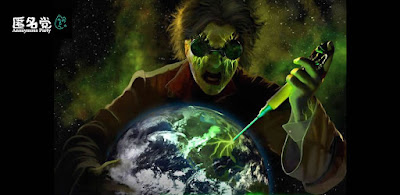When Franklin D. Roosevelt signed Executive Order 9066 in February 1942, authorizing the evacuation of all those of Japanese descent from the West Coast to war relocation centers, the Buddhist faith practiced by many Japanese Americans was itself regarded as a potential threat.
After the attack on Pearl Harbor and the formal entry of the United States into World War II, the FBI compiled a list of suspected collaborators that included not only members of groups with political ties to Japan, but the leaders of Buddhist temples.
FBI Director J. Edgar Hoover's Custodial Detention List used a classification system designating the supposed risk of individuals on an A-B-C scale, with an "A" assigned to those deserving greatest suspicion. In Hoover's system, Buddhist priests were designated "A-1": "dangerous enemy aliens" whose arrest was considered a matter of urgent concern.
Even before the war, Japanese Buddhists were thought to be less "Americanized" than their countrymen who had converted to Christianity, and in some ways this was true.
Even before the war, Japanese Buddhists were thought to be less "Americanized" than their countrymen who had converted to Christianity, and in some ways this was true.
Within the Japanese immigrant community, Buddhists were more likely than Christians to maintain their native language, as well as their facility with customs and rituals performed in that language. They were also more likely than Japanese Christians to read publications concerned with political affairs in the country they left behind. Subscription rolls of such publications provided the FBI with a starting point for building its "A" list of suspects.
Because of the connections and traditional knowledge Buddhist temples helped maintain, to be a Japanese Buddhist in America was to be considered a risk to national security. Facing such scrutiny, many Buddhists enlisted for military service to prove their loyalty and patriotism.
The famous 442nd Combat Regiment was not only entirely Japanese, but it was largely Buddhist. It became the most decorated infantry regiment in Europe. In the Pacific theater, 6,000 American servicemen of Japanese descent -- again, many Buddhists among them -- worked as linguists and code breakers, hastening the end of the war.
で、イエズス会経由でバチカンに泣きついて米帝によるパージを回避したと・・・(爆wwwwwwww
で、元は同じ仏教でもイスカリオテして大勝利しちまった大作センセがうらやまけしからんと・・・(爆wwwwwww
で、イエズス会経由でバチカンに泣きついて米帝によるパージを回避したと・・・(爆wwwwwwww
で、元は同じ仏教でもイスカリオテして大勝利しちまった大作センセがうらやまけしからんと・・・(爆wwwwwww




3 件のコメント:
> Buddhists were Public Enemy No. 1
(爆wwwww
(資産)回収されないうちに改宗を(爆wwwww
昨晩ipadの電源落とした後
かにえぴょんがうーうー鳴き出したんでこれ以降の記事だったんですなwww
無防備マンと黒い人のショットを載せないなんて
なんのやさしさっすか?wwwwwww
大作センセー組織のコントロールは凄いっすな
庶民が日々の中で一番ブーたれ易い消費増税分の場面でも「今が本来、前までが異常」と
教育行き届きすぎ って思うもんww
コメントを投稿